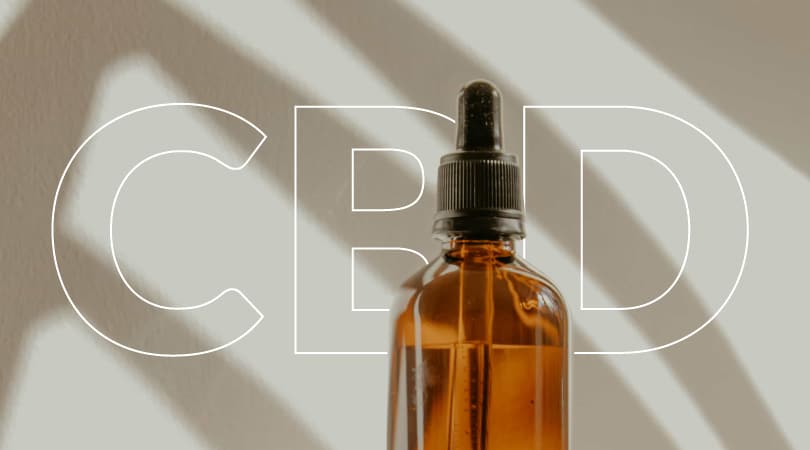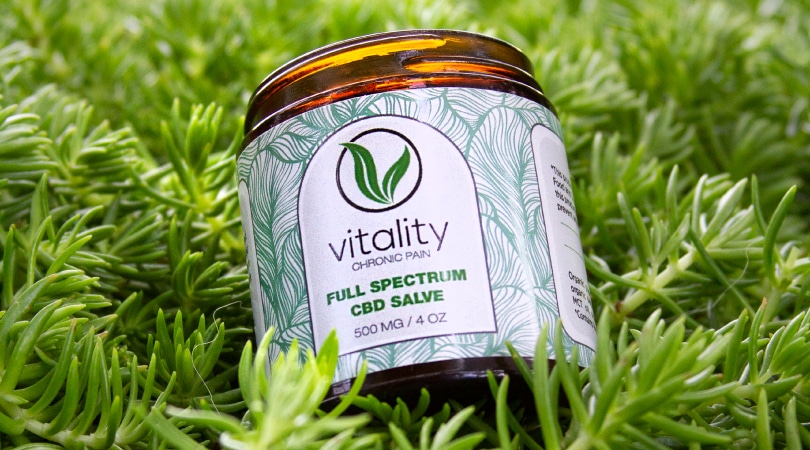
CBD for Tendonitis: An Alternative to Traditional Treatments?
We’ve all been there: a weekend full of plans ruined by tendonitis. This condition can strike at any time, causing discomfort around the joint and affecting your mobility and ability to perform certain tasks.
Thankfully, most tendonitis cases respond well to rest, some sort of physical therapy, and pain-relieving medications; and the sooner you start treatment, the faster you’ll heal.
However, sometimes traditional medication options aren’t exactly ideal if you prefer more natural alternatives. This is why CBD could be a great potential ally for you.
Let’s dive into the potential benefits of CBD for tendonitis, how it works, and the most effective forms of CBD products for this condition.

What Is Tendonitis?
Tendonitis is the inflammation of a tendon, the cord that connects the muscle to a bone. It can be caused by either a sudden injury or by making a repetitive movement.
Tendonitis symptoms include:
- Tenderness or soreness around the joint
- Swelling
- Having trouble moving the affected area
- Pain, especially when trying to move
There are different types of tendonitis according to its particular cause.
| Type of Tendonitis | Affected Area | Cause |
|---|---|---|
| Tennis elbow | Outer elbow: Inflammation of the tendons that extend the wrist and fingers. | Often caused by repetitive gripping and twisting motions of the forearm. |
| Golfer’s elbow | Inner elbow: Inflammation of the tendons that flex the wrist and fingers. | Caused by repetitive gripping and pulling motions of the forearm. |
| Pitcher’s shoulder | Shoulder: Inflammation of the tendons in the shoulder, particularly those involved in throwing motions. | Caused by the repetitive overhead throwing motion. |
| Swimmer’s shoulder | Shoulder: Inflammation of the tendons in the shoulder | Often caused by repetitive overhead arm strokes in swimming. |
| Runner’s knee (jumper’s knee) | Knee: Inflammation of the patellar tendon, which connects the kneecap to the shinbone. | Caused by repetitive jumping, running, or kneeling activities. |
Now, as we mentioned before, tendonitis is most often caused by overuse or sudden injuries, but other factors can contribute as well:
- Bad sport technique: Moving incorrectly during a workout routine or practicing sports can put extra tension on your tendons.
- Age: Tendons become less flexible as we age.
- Certain jobs: Positions that involve repetitive motions, awkward postures, or frequently reaching overhead, such as desk jobs, or stocking shelves.
- Medical conditions: Certain medical conditions like diabetes can increase the risk of tendonitis.
- Medications: Some medications, such as fluoroquinolone antibiotics.
CBD for Tendonitis: How Can It Help You?

CBD, derived from hemp, is non-psychoactive, meaning it doesn’t cause a “high.” It interacts with your body’s endocannabinoid system, a network of receptors and neurotransmitters that helps maintain internal balance in some physiological processes.
CBD’s anti-inflammatory properties and its interaction with pain receptors in the endocannabinoid system may potentially help manage tendonitis symptoms.
Although there is currently no research that focuses exclusively on CBD and tendonitis yet, this 2023 study explored CBD and its potential benefits in treating musculoskeletal disorders, which targets some of the same areas impacted by tendonitis.
This study suggests that CBD enhances stem cell migration and wound healing, some key components of regenerative medicine. Researchers also claimed that CB receptors could inhibit inflammation, and improve sleep, which helps with tissue regeneration.
However, they stress that even though CBD could have anti-inflammatory properties, and fight increased sensitivity to pain, more clinical trials are needed.
CBD Products for Tendonitis
CBD Oil for Tendonitis
CBD oil has been linked to pain relief, and it’s thought to be a great choice for potential tendonitis relief because it is easy to use and absorbs quickly.
Dosage: Start low and increase gradually based on your needs and how your body reacts. Learn more about CBD dosage.
How to Use It: Place the oil under your tongue using a dropper. Hold for 30 seconds to 1 minute before swallowing.
Benefits of CBD Oil for Tendonitis
- Fast Absorption: Sublingual application allows for quicker relief.
- Adjustable Dosage: Easy to adjust the dose as needed.
- A More Comprehensive Effect: CBD Oil provides overall relief by entering the bloodstream and interacting with the endocannabinoid system.
CBD Salve for Chronic Pain

Out CBD Salve for Chronic Pain offers a natural potential approach to relieving chronic pain and inflammation. It has eucalyptus essential oil, which enhances its effects.
How to Use: Apply a small amount directly to the affected area 3 to 4 times per day. Massage gently into the skin for best results. Learn how CBD can be absorbed through the skin.
CBD Salve for Tension
Our CBD salve for tension, infused with clary sage, is made to provide relief from tension, especially from muscle soreness.
How to Use: Apply a small amount to the affected area and massage gently. As a bonus tip, you can softly inhale the salve after applying it to enhance the effects of clary sage.
Benefits of CBD Salves for Tendonitis
- Targeted Relief: The main benefit of CBD salves is that you can directly apply it to the affected area, focusing the product effect where you need it the most.
CBD for Tendonitis – FAQs
Can CBD completely replace traditional treatments for tendonitis?
No, CBD is not a cure for tendonitis and shouldn’t entirely replace traditional treatments. Rest, physical therapy, and pain relievers are still crucial for recovery. However, CBD may be a helpful addition to your treatment plan for managing pain and inflammation.
Is there any risk of interaction between CBD and medications I’m already taking?
Although rare, CBD can interact with certain medications, so it’s best that you talk to your doctor before using CBD, especially if you’re already taking medication for tendonitis or other conditions.
How long does it take for CBD to work for tendonitis?
Everyone’s body reacts differently to CBD. The oil may provide faster relief due to sublingual absorption, while salves may take longer but offer targeted relief. It’s recommended to start low and gradually increase the dosage to find what works best for you.
What are some factors to consider when choosing a CBD product for tendonitis?
- Type of product: Oil offers faster absorption and easier dosage control, while salves provide targeted relief to the affected area.
- Potency: Start with a lower potency and increase gradually as needed.
- Source: Only buy CBD products from reputable brands.
Can I use CBD if I’m pregnant or breastfeeding?
There is not enough research on the safety of CBD for pregnant or breastfeeding women, so in this case, the best option is to avoid CBD use during these times.
Final Thoughts
CBD shows promise in managing tendonitis symptoms, yet it’s crucial to remember that research on CBD and tendonitis is still in its early stages. Studies suggest that CBD may have anti-inflammatory and pain-relieving properties; however, more clinical trials are needed to fully understand its effects on tendonitis.
If you’re considering using CBD for tendonitis, it’s important to consult with a healthcare professional first, especially if you’re already taking medication or have a medical condition.
References
Marques Azzini, G. O., Marques Azzini, V. O., Santos, G. S., Visoni, S., Fusco, M. A., Beker, N. S., Mahmood, A., Bizinotto Lana, J. V., Jeyaraman, M., Nallakumarasamy, A., Jeyaraman, N., da Fonseca, L. F., Luz Arab, M. G., Vicente, R., Rajendran, R. L., Gangadaran, P., Ahn, B. C., & Duarte Lana, J. F. S. (2023). Cannabidiol for musculoskeletal regenerative medicine. Experimental biology and medicine (Maywood, N.J.), 248(5), 445–455. https://doi.org/10.1177/15353702231162086
